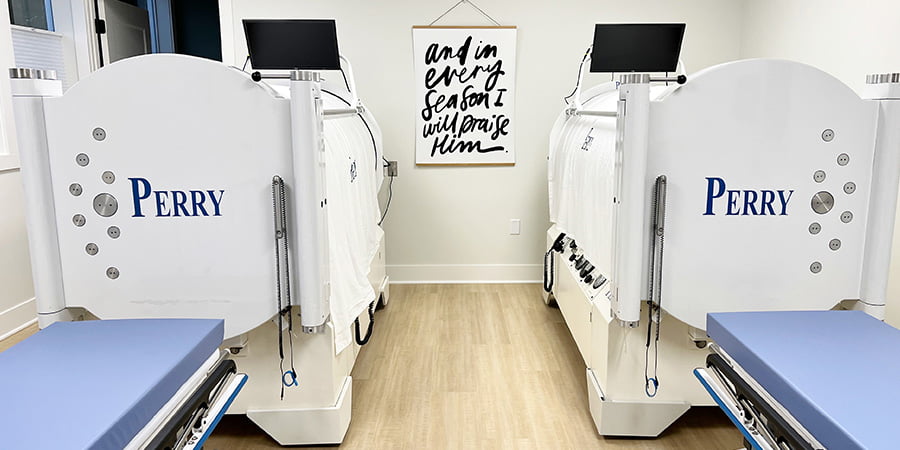
Hyperbaric Oxygen Therapy: A Data-Driven Look into Treating Traumatic Brain Injuries (TBI)
Traumatic Brain Injuries (TBI) stand as a significant public health challenge, with global incidence rates providing stark evidence of their impact. In the United States alone, TBIs account for an estimated 1.7 million new cases annually. These injuries are not only prevalent but carry a heavy burden of disability, contributing to a third of all injury-related deaths in the country.
The Burden of Traumatic Brain Injuries
The spectrum of TBI severity ranges from mild, accounting for approximately 75% of all TBI cases, to severe. Despite the term ‘mild’, even these less severe injuries can result in significant, long-term cognitive and functional impairments for the affected individuals.
Statistically, the economic implications are staggering. The annual costs associated with TBI, including direct medical costs and indirect costs such as lost productivity, are estimated to be approximately $76.5 billion. These figures highlight the urgent need for effective management and treatment strategies to mitigate the extensive impact of TBI on individuals and society.
Hyperbaric Oxygen Therapy: Exploring the Data
Hyperbaric Oxygen Therapy (HBOT) presents a novel approach to TBI treatment, distinguished by its unique mechanism of increasing oxygen availability to damaged brain tissue. Here’s a closer look at the data and findings from recent studies:
- 1: Oxygen Saturation and Healing: Research indicates that HBOT can elevate brain oxygen levels by more than 10 times normal atmospheric pressure, significantly enhancing the body’s ability to repair and regenerate damaged neuronal tissue.
- 2: Clinical Trials and Outcomes: A landmark study involving TBI patients revealed that those receiving HBOT showed improvements in neurological functions and quality of life measures, compared to a control group. Specifically, patients undergoing 40 HBOT sessions exhibited improvements in memory, concentration, and executive functions.
- 3: Long-Term Effects: Follow-up studies suggest that the cognitive benefits derived from HBOT for TBI patients can persist for months or even years post-treatment, indicating long-term neurological improvement.
- 4: Patient Response Rates: Data from various clinical trials estimate that approximately 60-80% of TBI patients treated with HBOT show significant improvements in cognitive and physical functions, although response rates can vary based on injury severity and individual patient factors.
Addressing the Challenges
Despite the promising data, HBOT is not without its challenges and limitations. Accessibility remains a significant barrier, with specialized facilities required to administer the therapy. Additionally, the cost can be prohibitive for many patients, as insurance coverage for HBOT in TBI treatment varies widely and is often limited.
Furthermore, while the data supports the potential benefits of HBOT, the medical community calls for more large-scale, randomized controlled trials to establish standardized protocols and validate the efficacy of HBOT across different TBI populations.
Overcoming the Challenges
Discover the Unique Benefits of HBOT at Vitalis-Health in Western Michigan
At Vitalis-Health, nestled in the heart of West Michigan, in Holland, we stand out as one of the unique private practices equipped with not one, but two hard-sided Hyperbaric Oxygen Therapy (HBOT) tanks. This is a rare find in the region and a significant advantage for those seeking effective treatment options.
Hyperbaric Oxygen Therapy has been recognized for its potential in treating a range of conditions by increasing oxygen levels in the bloodstream, tissues and surrounding cellular fluid (interstitial fluid) promoting healing. However, not all HBOT facilities are created equal. While there are other facilities that offer HBOT using soft-sided chambers with oxygen concentrators, it’s crucial to understand the difference in the quality of treatment you receive.
Soft-sided HBOT tanks, often found in other facilities, typically deliver only about 24-26% oxygen. Although this is higher than the oxygen level in normal air (21%), it falls significantly short compared to the 100% oxygen delivered in hard-sided tanks. This distinction is not merely a matter of numbers; it translates into a substantial difference in treatment efficacy. Additionally, soft sided chambers typically only go up to 1.3 atmospheres of pressure (ATA), hard chambers can go up to 3.0 ATA, therefore significantly increasing the oxygen concentration at the level of the cells and tissues, to help facilitate healing.
At Vitalis-Health, our hard-sided HBOT tanks ensure that patients receive the highest possible concentration of oxygen. This maximizes the therapeutic benefits, including enhanced healing, improved recovery times, and a better overall treatment experience. Whether you’re dealing with Traumatic Brain Injuries, chronic wounds, recovering from a sports injury, or seeking therapy for other conditions, our facility offers a superior option for HBOT.
We take pride in offering this advanced treatment modality right here in West Michigan, making it accessible to those who need it the most. By choosing Vitalis-Health, you’re not only opting for a facility with state-of-the-art equipment but also for a team committed to providing personalized and effective care.
Experience the difference at Vitalis-Health: where advanced technology meets compassionate care.
Conclusion
The journey to rehabilitate from a Traumatic Brain Injury is arduous and multifaceted. While HBOT offers promising data for enhancing recovery, integrating this therapy into standard TBI treatment protocols necessitates a careful evaluation of the benefits versus accessibility and costs.
As the body of evidence grows, the hope is that clearer guidelines and more widespread availability of HBOT will emerge, offering TBI patients a stronger foundation for recovery. For now, individuals affected by TBI and their healthcare providers must navigate available treatment options, armed with the latest data and a comprehensive understanding of potential benefits and limitations.
In the ongoing quest to mitigate the impact of TBI, Hyperbaric Oxygen Therapy stands out as a compelling area of research, offering a glimmer of hope amidst the complex landscape of brain injury recovery.
